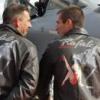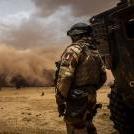-
Compteur de contenus
176 -
Inscription
-
Dernière visite
Réputation sur la communauté
92 ExcellentProfile Information
-
Gender
Male
-
Location
DENTIST(LORD OF 32 TEETH)
-
Interests
Bikes , Busty babes & Weapons
-
Pays
India
Visiteurs récents du profil
-

Rafale and other european jets [English only]
DrSomnath999 a répondu à un(e) sujet de seb24 dans Europe
https://www.theweek.in/columns/prasannan/2020/08/06/licence-to-make-licence-to-kill.html- 291 réponses
-
- Rafale
- Eurofighter
-
(et 1 en plus)
Étiqueté avec :
-

Rafale and other european jets [English only]
DrSomnath999 a répondu à un(e) sujet de seb24 dans Europe
it is not my fault if you cant properly comprehend and understand someone's view or post in logical and rational way and what context specifically someone is posting his views, but no rather posting unneccesarry accusations has become habits of some without proper understanding or reasoning himself of that issue 1st. so if someone post such a thing and you expect just updating your existing system would have solve this issue then no country will invest in future new gen warplanes . then mirage 2000 upgradation would have solve the issue why the french made rafale then . plus you yourself need to test those upgradations it works in reality or not in actual combat or field trials the french have done R/D for rafale in many techs department ,but have they introduced every studies and research in rafale.Some work and some dont so they dont introduced it on rafale . CHEERS- 291 réponses
-
- Rafale
- Eurofighter
-
(et 1 en plus)
Étiqueté avec :
-

Rafale and other european jets [English only]
DrSomnath999 a répondu à un(e) sujet de seb24 dans Europe
it has limits upgrade has to be evaluated also in real time ,only claiming such things is not enough CHEERS- 291 réponses
-
- Rafale
- Eurofighter
-
(et 1 en plus)
Étiqueté avec :
-

Rafale and other european jets [English only]
DrSomnath999 a répondu à un(e) sujet de seb24 dans Europe
What did he post read that carefully then post such accusations like that does qatar and india have undergone any upgradation yet . i never said they didnt .Upgradation will never fulffill every requiremnet to cope up with future threats . It is just to keep up with new threats CHEERS- 291 réponses
-
- Rafale
- Eurofighter
-
(et 1 en plus)
Étiqueté avec :
-

Rafale and other european jets [English only]
DrSomnath999 a répondu à un(e) sujet de seb24 dans Europe
I presume or hope , that No one is forcing you ,atleast not me to beleive it is true . i hope this website is a forum not personal blogspot where someone cant post anything which doesnt suits some member's mentality or belief.a reputed defence website if post such things then it is their fault or problem . CHEERS- 291 réponses
-
- Rafale
- Eurofighter
-
(et 1 en plus)
Étiqueté avec :
-

Rafale and other european jets [English only]
DrSomnath999 a répondu à un(e) sujet de seb24 dans Europe
wrong rafale sold to other countries are usually of F3R standards or eg specially india's own customization standard .so no question of upgradation arises till now only the rafales in french airforces have been upgraded becoz it is very easy to upgrade and they have it from beginning from t1 ,t2 standards. upgradation has some limits to fullfil one's requirements if upgradtion can achieve all objectives then france wouldnt have invested in next gen planes . CHEERS what i believe is french is using this ploy to avoid direct confrontation with turkey.They are using this ploy to immediately deploy rafale and use it against turkey if situations demand.No country gifts theirfrontline planes just like that . other countries would also demand like that .If that case then india should be the 1st priority than greece.India has more economic future than greece CHEERS- 291 réponses
-
- Rafale
- Eurofighter
-
(et 1 en plus)
Étiqueté avec :
-

Rafale and other european jets [English only]
DrSomnath999 a répondu à un(e) sujet de seb24 dans Europe
the point of what tranche of rafale france have doesnt matter ,what matters is what will be the gifted rafales be to greece if true .? if f3R is given then it must be very costly thing to donate .if downgraded then a claim by you shall be taken with a pinch of salt .as enemy have upgraded their airdefences and interceptor jets wthin this 10 year time . and also price of upgradtion for a country like greece whose econoimic condition is not so good shall also be taken into consideration.Simple aesa upgradtion is not so cheap even if it plug and play type . CHEERS- 291 réponses
-
- Rafale
- Eurofighter
-
(et 1 en plus)
Étiqueté avec :
-

Rafale and other european jets [English only]
DrSomnath999 a répondu à un(e) sujet de seb24 dans Europe
well if you trust this source or not , i will let you decide this time https://www.defenseworld.net/news/27763/Greece_to_Buy_10_Rafale_Jets__Receive_8_More_as____Donation____from_France#.X058blUzbIU Btw i am too lazy to find out which tranche of rafale planes bombed alwatiya airbase recently.I hope it might be f3 standard i wish france does the same to us looking at current scenario with the chinese. CHEERS [ merci please keep those sort of articles coming from yourside in future also. CHEERS- 291 réponses
-
- Rafale
- Eurofighter
-
(et 1 en plus)
Étiqueté avec :
-

Rafale and other european jets [English only]
DrSomnath999 a répondu à un(e) sujet de seb24 dans Europe
You quoted and replied to an insufficient part of my post .rather you should have quoted and replied the complete sentence of my post.which is if they gift old Rafales not new ones like f2 standard planes.i don't think France would be so generous to gift new ones for free. CHEERS- 291 réponses
-
- Rafale
- Eurofighter
-
(et 1 en plus)
Étiqueté avec :
-

Rafale and other european jets [English only]
DrSomnath999 a répondu à un(e) sujet de seb24 dans Europe
https://www.ouest-france.fr/economie/entreprises/dassault/dassault-le-gouvernement-pourrait-revoir-le-calendrier-de-commandes-de-30-rafale-6953008 https://www.challenges.fr/entreprise/defense/paris-discute-avec-dassault-du-calendrier-des-commandes-de-rafale_724991- 291 réponses
-
- Rafale
- Eurofighter
-
(et 1 en plus)
Étiqueté avec :
-

Rafale and other european jets [English only]
DrSomnath999 a répondu à un(e) sujet de seb24 dans Europe
https://www.itamilradar.com/2020/08/29/greece-to-buy-rafale/ https://www.meta-defense.fr/en/2020/08/25/Greece-would-like-to-acquire-12-Rafale-planes/ http://www.defense-aerospace.com/articles-view/release/3/91781/france-steps-up-rafale-marketing-in-greece.html hee hee rafale vs S400 scenario twice one in india vs china and now greece vs turkey even if france might use himself if not greece if this news of gifting rafale is not true btw rafale old version if they give to greece i am skeptical how would it perform against S400 lets see how rafale performs CHEERS- 291 réponses
-
- Rafale
- Eurofighter
-
(et 1 en plus)
Étiqueté avec :
-

Rafale and other european jets [English only]
DrSomnath999 a répondu à un(e) sujet de seb24 dans Europe
https://theprint.in/defence/second-batch-of-rafale-fighter-jets-from-france-to-arrive-in-india-in-october/490764/- 291 réponses
-
- 1
-

-
- Rafale
- Eurofighter
-
(et 1 en plus)
Étiqueté avec :
-

Rafale and other european jets [English only]
DrSomnath999 a répondu à un(e) sujet de seb24 dans Europe
Only 364 Kms From Lhasa, 2nd Batch Of Rafale Jets At Hasimara Minutes Away From Critical Chinese Posts Hasimara Air Force Station in West Bengal’s Alipurduar district is expected to house the second squadron of the Rafale jets to be received by end of mid-2021. The Hasimara airbase holds strategic importance as it lies only 364km away from Lhasa airport in Tibet’s capital. Hasimara is under the operational command of the Shillong-based Eastern Air Command, which shares the security concerns of the Line of Actual Control (LAC) along with the Western Air Command and Prayagraj-based Central Air Command. “The second base for Rafale is planned at Hashimara (West Bengal). Pakistan is not the real enemy as far airpower is concerned, but our eastern neighbor China is. When we didn’t have Rafale, we had moved three squadrons of Sukhoi in the east. With Rafale, we will have an adequate number of airborne fighters and fighter bombers to look after the China threat,” former Vice-Chief of Air Staff Air Marshal Barbora told The Tribune. The first squadron of the French origin jets was received at the Ambala Air Force Station in Punjab. New Delhi has allocated a budget of Rs 400 crores for these two Air Force Stations to build facilities, develop shelters, hangers, and maintenance facilities to house the Rafale jets. The Hasimara base was created after the 1962 Indo Sino war. It earlier had a MiG-27 squadron which is being now replaced by Rafales but it presently has no squadrons. Although, it has also housed several other fighter jets including Gnats, Ajeets, Hunters, MiG-21Bis, and the Mig-27 ML fighter jets. “Earlier, it was planned that one squadron of the Rafale would be based out of the Sarsawa Air Force Station in Uttar Pradesh. However, issues relating to land acquisition eventually led to the selection of the Ambala Air Force Station to prepare itself for a two-front war in the northern side from Pakistan and China,” said Grp Captain (retd) R K Das. “We have some porous border in the Eastern sector, so Hasimara Air Force base being fortified,” he added. After the recent clash at the LAC in Galwan valley, India has ramped up its military preparedness by making emergency procurement of munitions. Hasimara airbase is responsible for guarding the tiny Chicken’s Neck or the Siliguri Corridor in North Bengal, a narrow stretch of land about 22 kilometers wide that connects the country’s mainland with the northeastern states. Nepal on the north and Bangladesh on the south. Hasimara base is also responsible for guarding the Nathula pass in Sikkim from the Chinese. https://eurasiantimes.com/only-364-kms-from-lhasa-2nd-batch-of-rafale-jets-at-hasimara-minutes-away-from-critical-chinese-posts/- 291 réponses
-
- 2
-

-
- Rafale
- Eurofighter
-
(et 1 en plus)
Étiqueté avec :
-

Rafale and other european jets [English only]
DrSomnath999 a répondu à un(e) sujet de seb24 dans Europe
Rafale: the F4 standard is revealed June 2, 2020 In January 2019, when the first Rafale to the F3R standard arrived in the Air Force, the Minister of the Armed Forces took advantage of a visit to the Dassault Aviation plant in Mérignac to officially launch the development of a new standard. major, the F4. Enough to allow the aircraft to increase its operational performance, but also to remain competitive in the years to come, especially against the Lockheed Martin F ‑ 35. On the F3R standard, the latest to date for the Rafale, efforts have mainly focused on updating the software and improving the sensors and armaments: AESA antenna for the RBE2 radar; integration of the Meteor long-range air-to-air missile; new TALIOS laser designation pod (Targeting Long-range Identification Optronic System); integration of GBU ‑ 16 and AASM Bk.3 bombs. With the F4 standard, the idea this time is to focus on issues of connectivity and network combat, which implies profound changes in both software and hardware. And, for the first time, the perfect technical interoperability of the Rafale fleet could well be undermined with an F4.1 standard for the existing Rafale and an F4.2 for the 58 aircraft still to be delivered to France. While all the devices will receive software updates and will be able to integrate the various modernized modular elements, such as the AESA radar or a new OSF (Frontal Sector Optronics), only F4.2 devices will receive all the hardware modifications of the standard. F4, especially in electronic warfare. A priori, these aircraft should also have precautionary measures for deeper modernizations in the context of subsequent standards, or a possible mid-life renovation of the Rafale. Connectivity, engagement and availability The first risk-lifting studies on the Rafale F4 standard began in 2017, the scope of the standard being determined the following year for a development launch in January 2019. At present, if the ambitions of the DGA and the GIE Rafale International on this new standard are clearly defined, all the details of the configuration would not have been fixed. As always, compromises will have to be made between operational needs, respect for the budgetary envelope and industrial imperatives. The open architecture of the Rafale should allow an incremental implementation of the new standard, with certain functionalities available from 2022, the validation of the complete standard not taking place until 2024 for delivery to the forces in 2025. • interconnectivity; • device support and availability; • improvement of sensors; • modernization of armaments. In these different fields, many innovations have appeared in recent years. Thus, the computer components of modern weapon systems today increasingly rely on artificial intelligence for massive data processing, which has become essential for managing the complexity of the battlefield, but also for improving tools. predictive maintenance. Likewise, advances in applied chemistry have made it possible to improve missile propulsion, or to make the use of gallium nitride (GaN) affordable, which improves the performance of the AESA antennas of the Rafale's self-protection system. , the famous SPECTRA. Communication and connectivity If the Rafale were to have only one flaw, it would probably be its radio. Without being catastrophic, it seems quite far from current standards in terms of signal strength and clarity. With the F4 standard, the Rafale will finally be equipped with a brand new digital communication system which should improve pilots' situational awareness, including in electronically contested environments: • the devices will thus receive CONTACT software radio, the new standard of the French armies allowing the various actors present in the theater to share a common operational image; • a new intra-patrol tactical data link, discreet and directional, should also integrate the Rafale, alongside the current L-16. This link will be based on three-dimensional waveforms (FO3D) generated by digital synthesis; • the Rafales should be equipped, at the bottom of the drift, with a military-grade, encrypted, discreet and SYRACUSE IV compatible SATCOM, which could be derived from the SAKaR unveiled by Thales in November 2018; • the management of these communication sets, in addition to the existing data links, should be entrusted to a new generation of communication servers, possibly derived from Thales NEXENs, making it possible to simplify the task of the crew while ensuring encryption and cyber data protection. All of this equipment should make it possible to create real communication networks within a Rafale patrol, but also, via SATCOM and CONTACT, throughout an entire theater of operations. Each pilot will thus have access to an extended tactical situation allowing long-range network combat, even in complex environments. The Rafale can also serve as a radio relay between ground troops and metropolitan decision-making centers, or follow the evolution of a tactical situation live from the start of their transit phase. In many respects, this is the real raison d'être of the F4 standard, which allows the Rafale to catch up with its connectivity delay on the F-35, mentioned in 2017 by the chief of staff of the Air Force in front of the National Assembly. Sensors and interface In line with the F3R standard, the F4 should bring improvements in terms of detection. For the AESA RBE2 radar, the modifications will mainly be software with the addition of a GMTI (Ground Moving Target Indicator) mode for the detection and tracking of mobile land targets, as well as an ultra-HD mode for imaging. long range radar. Mode interleaving should be further improved, in part thanks to the continued increase in computing power offered by the Rafale's open architecture, which should be completely modernized and made more resistant to cyber attacks. If the GaN-based AESA technology today seems too expensive to be applied to the antenna of an RBE2, it should be applied to those of the SPECTRA system, responsible in particular for wiretapping and jamming. SPECTRA should thus gain in frequency agility, angular precision, detection speed and transmission power, while operating over a wider range of frequencies, against aerial or surface contact. In terms of sensors, the great "novelty" should relate to the return of an IR channel on board the OSF, a capability abandoned a few years ago, but which was requested in particular by the French army. Indian air. In terms of interface, the choice was made not to upset the existing ergonomics. In the cockpit, the side screens have been slightly enlarged and equipped with a new touch interface. The great ergonomic novelty should therefore be a helmet display, planned at the start of the program, but canceled twice in the past. Although the system is eagerly awaited by the pilots, all the obstacles have not yet been overcome. Indeed, the financial and operational logic pushes towards the choice of an Israeli solution already integrated on the Rafale export, while Thales logically militates for a national solution. Armaments After the integration of the Meteor into the F3R, the Rafale F4 armaments panel should expand further: • the SCALP EG missile should be reconditioned by MBDA in order to deal with obsolescence and cell aging. The first refurbished SCALPs will be delivered next year and will serve until the early 2030s; • AASM armament should evolve further, with the appearance of a simplified Bk.4, devoid of propulsion and optimized for close air support. A 1000 kg version of the AASM should also be integrated into the Rafale in the coming years, replacing the GBU ‑ 24; • but the great innovation in terms of armament will be the MICA ‑ NG which will complete the Meteor on the medium range. If it maintains the aerodynamics, mass and balance of the MICA, the MICA ‑ NG will be a highly efficient missile. The radar-guided version will have a more powerful AESA antenna, but also more resistant to jamming. The MICA ‑ IR infrared seeker will be entitled to a new matrix sensor that is more sensitive and capable of better discriminating against adverse decoys. Finally, the miniaturization of the electronic compartment allows the transport of more propellant for the engine, which has a double impulse capacity. Enough to increase the MICA's range by 30%, while allowing it to keep energy in reserve to maneuver during the interception phase. It should be noted that the integration of laser-guided rockets and the development of a new nuclear missile are the subject of separate programs and are therefore not taken into account in the context of the F4 standard. Support and availability As with every standard change, significant efforts have been made in terms of Maintenance in Operational Condition (MCO) and use costs, this time with a more extensive integration of the latest digital technologies. Today, the Harpagon technical restitution and logistics management system already makes it possible to do without a large part of periodic inspections on the Rafale, in particular by improving the remedial treatment of breakdowns and by making it possible to better anticipate preventive maintenance. The F3R standard already integrates diagnostic assistance functions using the data collected by the hundreds of sensors distributed throughout the cell of the device. However, improving algorithms and computing power will make it possible to multiply the collection and use of massive data after each Rafale flight. Enough to set up, in the years to come, a real forecast maintenance which will further reduce the cost of operational support and improve availability ... if all the spare parts are not monopolized in OPEX, which is another thing. problem. With the F4 standard, the entire logistics chain will therefore be updated in order to prepare for the gradual generalization of forecast maintenance methods. The Harpagon system will undergo a new development, miniaturized sensors will be integrated into the MICA ‑ NGs and the M88 reactor will receive a modernization of its FADECs, with new computers providing more data processing power. For Safran Aircraft Engines, massive collection of technical data is essential to improve engine efficiency, reduce maintenance costs, but also prepare for the future, in this case the motorization of the Franco-German SCAF. As we can see, the successive standards of the Rafale bring their share of incremental modernizations, and the F4 is no exception to this rule. If, externally, the new standard does not seem to induce such significant changes as the F3R which saw the arrival of the RBE2 AESA and the Meteor, the evolution is nevertheless much more impressive on the numerical level, promising a major operational breakthrough in terms of tactical situational awareness, network-centric combat, electronic warfare, cyber protection and passive detection. Better still, the F4 is now preparing for the future evolutions of the Rafale, whether it concerns predictive maintenance, multistatic detection, precautionary measures for future plate radars distributed over the airframe of the aircraft or the improvement of electronic warfare capabilities, including offensives. Enough to allow the Rafale to remain a formidable adversary in the decades to come, even in the face of stealth planes. https://www.areion24.news/2020/06/02/rafale-le-standard-f4-se-devoile/- 291 réponses
-
- 2
-

-
- Rafale
- Eurofighter
-
(et 1 en plus)
Étiqueté avec :
-

Rafale and other european jets [English only]
DrSomnath999 a répondu à un(e) sujet de seb24 dans Europe
- 291 réponses
-
- Rafale
- Eurofighter
-
(et 1 en plus)
Étiqueté avec :








